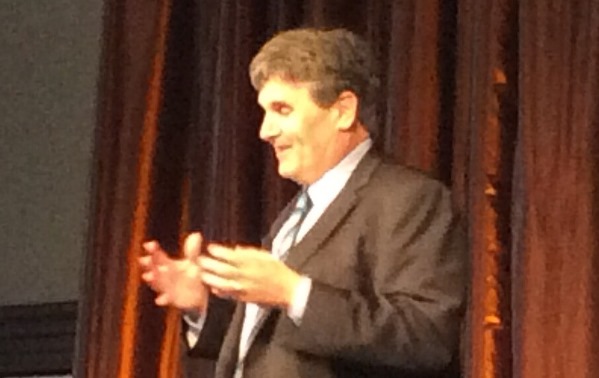Overview of California Workers’ Compensation System
At the 2015 WCIRB Annual Conference, Dave Bellusci, WCIRB Chief Actuary, presented an overview of California’s workers’ compensation system from the WCIRB perspective.
- 2014 was the fifth consecutive year of double-digit premium growth in California. This has been driven both by increased rates and economic growth.
- California currently compromises 27.1% of the nationwide workers’ compensation premiums. This is down from over 35% of the national premiums before the SB 899 reforms in 2004.
- The percentage of premium growth attributed to higher rates dropped significantly in 2014. In 2015, it is expected that the major driver of premium growth will be higher payrolls.
- The top five insurers in California write 41% of the market. The market concentration in California is very comparable to other states.
- National insurers write 72% of the market in California, with the state fund writing 9% and California private insurers writing 19%.
- Rates right now are comparable to what they were back in 1978, but they are up 43% since 2008.
- There has been an 83% reduction in claims frequency over the last 50 years. The workforce is clearly safer today than it was in the past and there has also been a change away from an industrial based economy. Approximately one-third of this reduction is attributed to the change in occupation mix to less-hazardous jobs.
- Four of the five increases in claim frequency in the last 20 years have occurred in the last five years. This goes against the continued decline in frequency that was seen in NCCI states during this same time period.
- The Los Angeles area has been driving the increase in frequeny with the rest of the state following the trends in NCCI states.
- There has been a continued growth in Cumulative Trauma (CT) claims with 13.3% of all claims now CT claims. This has been steadily increasing since 2008. Most of these increases are again coming from the Los Angeles Area. The rate of CT claims in the LA area has doubled since 2004.
- 80% of CT claims involved attorney representation. 61% involve multiple body parts. 61% of the claims are denied outright. 39% of CT claims are being filed post-termination even though there are statutory prohibitions against this.
- Indemnity loss per indemnity claim was $27,637 in 2014. This is up from 2013 and was due to the higher PD awards provided by the SB 863 reforms.
- Average medical cost per indemnity claim was $43,750 in 2014, down slightly from 2013, and it continues a four-year trend in medical severity declining.
- The spike in CT claims could be a factor in the declining medical severity as the focus on CT claims is usually trying to obtain additional indemnity benefits, not additional medical treatment.
- Over the last 9 years, the fastest growing medical cost has been pharmaceuticals with 235% growth. Medical cost containment charges are up 151%.
- In spite of the SB 863 reforms, frictional costs have not decreased since 2009. One of the focuses of this bill was reducing frictional costs in the system.
- 2014 accident year combined ratios are forcast at 103%. This is a 41% improvement from what it reached in 2010.
- SB 863 was initially priced by WCIRB as a wash in terms of system savings. They felt PD increases would be offset by reductions in other areas. Thus far, it has caused costs to increase due to higher frequency and an increase in administrative costs associated with higher than expected utilization of IMRs.
- Early indications are that a change to a RBRVS fee schedule has resulted in a slight decrease in medical costs. They initially expected a slight cost increase due to this change.
- IMR requests are four times hgher than projected and valid IMR requests are almost three times higher. This has increased frictional costs in the system.
- Significant decreases in loss adjustment expenses were expected with SB 863, however, these costs have increased instead.
- It is felt that the increased PD benefits from SB 863 is one of the factors behind the increase in frequency that is being seen.


